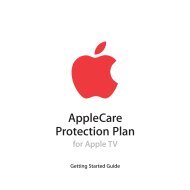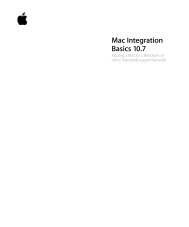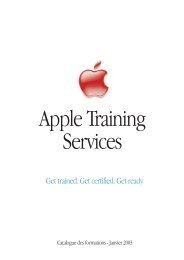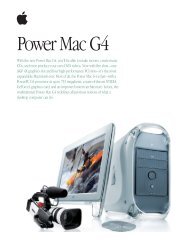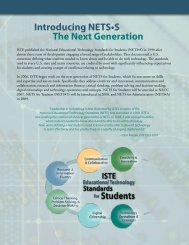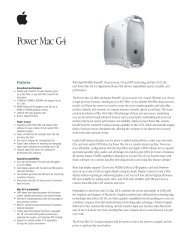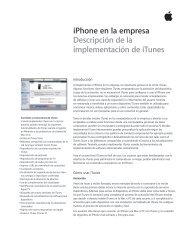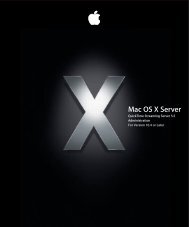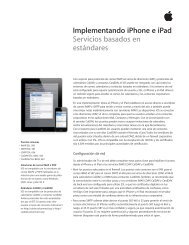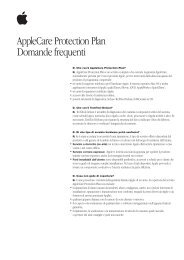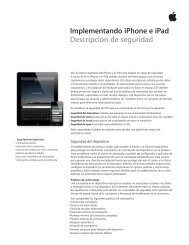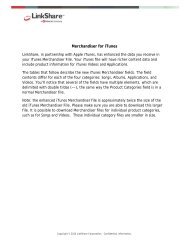In-House App Development Accelerator Guide - Apple
In-House App Development Accelerator Guide - Apple
In-House App Development Accelerator Guide - Apple
Create successful ePaper yourself
Turn your PDF publications into a flip-book with our unique Google optimized e-Paper software.
Look for a few simple tasks that the majority of your users do frequently and think about how a<br />
mobile app could make those tasks easier. Here are a few examples:<br />
• A simple app that allows an employee to approve an expense report or purchase order on the go<br />
• A corporate directory or campus map that everyone can use<br />
• A meeting room fi nder that employees can easily use while not at their desks<br />
• A simple time-tracking app that might tie into to your back-end time management or billing system<br />
<strong>In</strong>ventory Your Assets<br />
Often the best way to build an in-house app e∑ ciently is to leverage existing technology. You might<br />
want to do an inventory of your employee websites and determine if it makes sense to optimize them<br />
for iPhone or iPad. Or you might have back-end systems with data in a form you can easily deliver in a<br />
mobile context. Also, don’t forget about apps already in the <strong>App</strong> Store: An app that meets your needs<br />
may already be available. Review the Asset <strong>In</strong>ventory example (to the right) for additional questions<br />
that can help you survey your existing environment.<br />
Defi ne Your <strong>App</strong><br />
Once you have a solid understanding of what your users need, as well as the potential mobile<br />
solutions to meet those needs, you’ll want to refi ne those concepts into a concise project plan to<br />
share with your project stakeholders.<br />
The most important element in defi ning your project plan is the application defi nition statement—a<br />
concise defi nition of your app’s purpose. An application defi nition statement can help you avoid two<br />
common pitfalls:<br />
• You have an existing desktop app that you want to move to the mobile space and therefore a long<br />
list of features to bring to the new environment.<br />
• You have a great idea for a new mobile app, but you immediately jump to features before honing in<br />
on the core purpose of the app.<br />
Planning • Design • <strong>Development</strong> • Deployment<br />
Example: Asset <strong>In</strong>ventory<br />
Answering these questions can help you determine if you can reuse existing<br />
technology in your mobile app:<br />
• What systems do the most mobile part of your workforce use every day?<br />
• What do your mobile workers need to do the most?<br />
• What manual processes could be automated or simplifi ed by mobile apps?<br />
• Do you have existing nonmobile systems that could become useful for mobile<br />
workers?<br />
• Which functions within those systems are used most frequently?<br />
• What kind of data access do your enterprise systems provide? Is data easily<br />
accessed through web services?<br />
• Do you have internal websites that your employees access every day? Could<br />
these easily become mobile apps?<br />
“ We just went across the di∂ erent<br />
product lines and said, ‘Where<br />
does mobile truly make sense?<br />
What’s the top tier? What are<br />
the fi rst hits that we should go<br />
after?’ And we went from there.<br />
We went across our product<br />
portfolio and fi gured out what<br />
made most sense.”<br />
—James Blomberg, General Electric<br />
4



